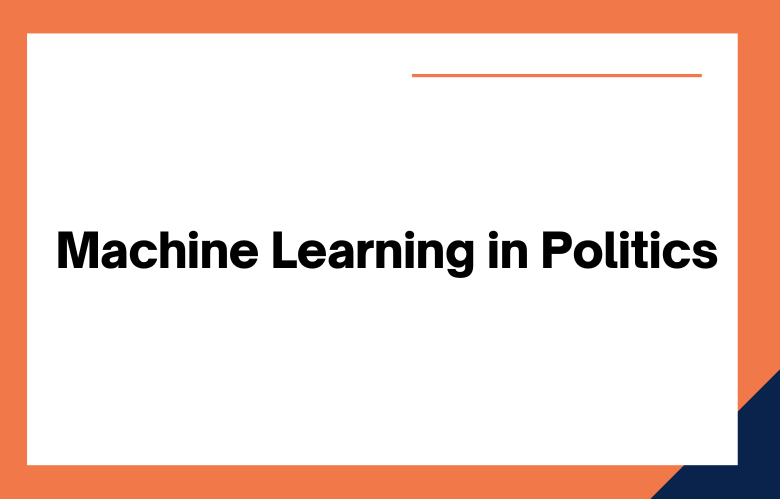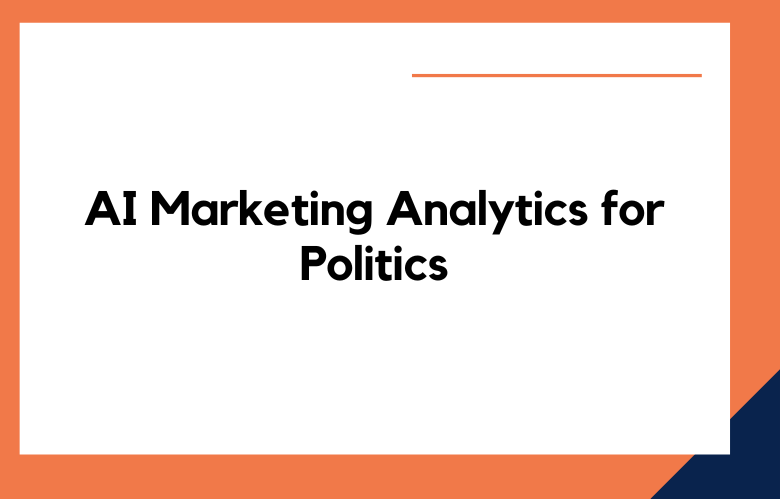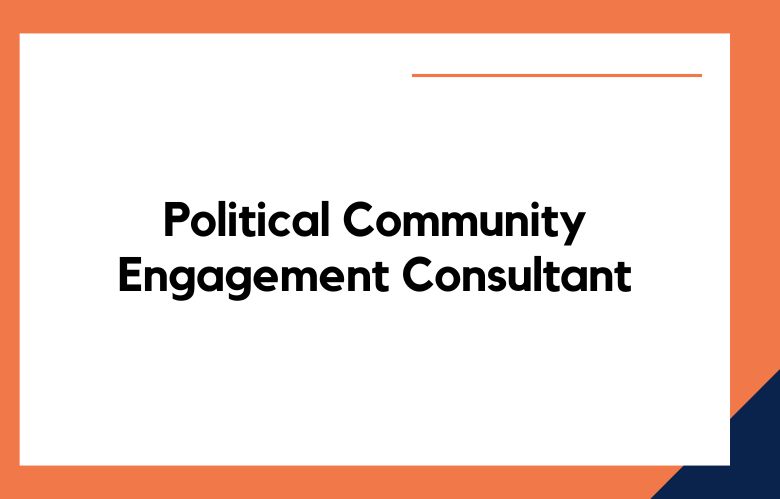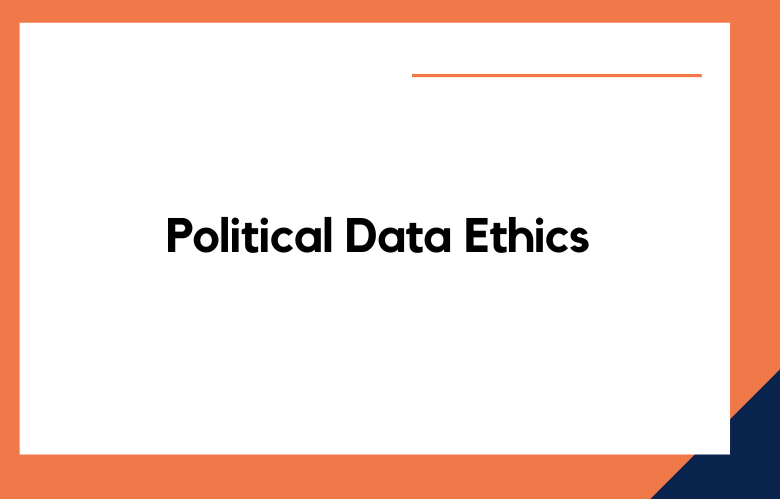As political campaigns become more competitive, politicians seek new and innovative ways to gain an edge over their opponents. One of the most promising tools for doing this is machine learning.
Machine learning has the potential to help political campaigns better understand their constituents’ needs and identify trends in voter satisfaction.
We’ll take a closer look at how machine learning can increase voter satisfaction in politics.
Political campaigns have been using technology to understand their target constituencies better and develop strategies for winning elections.
However, with the advent of machine learning, political campaigns can further customize their outreach efforts and increase voter satisfaction.
Learn more about how machine learning can help campaigns increase voter satisfaction.
As the world grows more attuned to technology, voter satisfaction has been a significant concern in politics.
With so many issues to tackle head-on, it can be difficult for politicians to give each case proper attention or take definitive stances on them all.
Fortunately, with machine learning technologies, elected officials may connect better with voters and enact policies that will increase voter satisfaction and trust in their elected representatives.
Read on to learn how machine learning applications are being utilized to improve the complex relationships between citizens and governments across societies, enabling the building of solid democracies driven by emerging technological advancements.
Do you ever feel overwhelmed by the vast and complex nature of politics today? Have you wondered how citizens could make their voices heard more meaningfully?
Recent advances in machine learning technology have opened up exciting new possibilities for drastically improving engagement between citizens, politicians, and other stakeholders.
We’ll discuss how machine learning can help increase voter satisfaction by creating more transparent processes and enabling two-way communication between constituents and elected officials. We’ll also look at examples of politicians leveraging resources like AI to understand their electorates better.
By harnessing the potential of these cutting-edge technologies, our political systems can start serving voters better than ever!
What is Machine Learning?
Machine learning is artificial intelligence (AI) that enables machines to learn from data and make decisions without being explicitly programmed.
Machine learning algorithms can be used for many different purposes, including predicting customer behavior, forecasting market trends, and identifying potential areas for improvement.
This technology has become increasingly important in politics as campaigns seek ways to understand their voters better and improve services accordingly.
Machine learning uses data-driven algorithms to uncover patterns and trends in data sets.
By analyzing large amounts of data, machines can predict future events or outcomes based on patterns and trends. This predictive model can then be used to inform human decisions or actions.
Machine learning allows us to use technology to automate decision-making processes, freeing up time and resources for other essential tasks.
How can Machine Learning Increase Voter Satisfaction?
By leveraging machine learning algorithms, political campaigns can gain valuable insights into their constituents’constituents’ needs and behaviors.
Using data collected from surveys, polls, social media posts, and other sources, they can pinpoint areas where they can improve voter satisfaction.
For example, by analyzing this data with demographic information, they could identify which demographics are most likely to vote for them or what issues resonate with certain voter groups.
Campaigns can also use machine learning algorithms to develop targeted messaging that resonates with specific groups of voters and craft effective campaign strategies depending on who they are targeting.
Machine learning can also help streamline communication between candidates and voters by optimizing email marketing campaigns or providing personalized recommendations based on individual preferences.
Machine learning has the potential to help increase voter satisfaction by allowing politicians to tailor their campaigns more precisely.
By analyzing large amounts of voter data, politicians can gain insights into what issues people care about and design their campaigns accordingly.
It helps ensure that candidates focus on the issues that matter most to voters rather than wasting time and resources on topics that aren’t relevant or essential.
It enables candidates to craft messages that speak directly to people’s concerns and needs instead of relying solely on broad platitudes or generalizations.
Using machine learning in campaign strategy also allows politicians to target specific groups of voters with tailored messages and initiatives that could lead them toward more excellent approval ratings among those populations.
For example, suppose a politician knows that education reform resonates strongly with young voters in their district.
In that case, they may focus their message around this topic when campaigning for votes from those individuals specifically. This targeted approach allows politicians to reach out directly to the groups they need support from without wasting time trying to appeal broadly across all demographics.
How Machine Learning Can Help Increase Voter Satisfaction
Machine learning algorithms can analyze large amounts of data quickly and accurately.
By analyzing data from surveys, polls, and other sources, machine learning algorithms can identify patterns and insights that may not be obvious to humans.
This information can then be used to understand a campaign’s target demographic better and tailor its message accordingly.
For example, a campaign could use machine learning algorithms to determine which issues are most important to voters in a particular region or district and then focus its messaging on those issues.
Machine learning algorithms can also predict voter behavior by analyzing past voting patterns and current public opinion data.
This information can help campaigns craft messages that best resonate with their target audiences and ensure they reach the right people at the right time.
Machine learning algorithms can also optimize digital marketing efforts by optimizing ad targeting based on past performance and predictive analytics.
Machine learning algorithms can also help campaigns better manage their resources by predicting budget needs for upcoming elections based on current voter trends.
This information can help campaigns allocate funds more efficiently and ensure that limited resources are spent wisely.
Machine learning can increase voter satisfaction by helping candidates better understand what issues are most important to their constituents and how to address them.
By using machine learning algorithms, politicians can gain valuable insights into voter sentiment by analyzing large amounts of data quickly and accurately.
This can help them craft messages that resonate with voters and develop policies that address the needs of their constituents.
Machine learning algorithms can be used to identify campaign strategies or fundraising tactics that will significantly impact voters’ opinions.
Another way machine learning can help increase voter satisfaction is by providing politicians with accurate predictions of election results.
This information allows them to make informed decisions about where to focus their efforts during election season, leading to increased efficiency and effectiveness in their campaigns.
These predictions enable politicians to target critical constituencies more effectively, increasing the chances of winning an election and increasing voter turnout and engagement.
Harnessing the Power of Machine Learning to Increase Voter Satisfaction
To understand why machine learning is crucial in the political space, it’s essential to understand what it is exactly.
In short, machine learning is a form of artificial intelligence that uses algorithms and data sets to create models that can be used to make predictions or decisions.
Political campaigns can use this technology to understand their voters better and tailor their outreach efforts accordingly.
One way that political campaigns can use machine learning is through sentiment analysis.
This process involves analyzing social media posts from voters to determine the overall opinion of the campaign or candidate among its target constituency.
By understanding voters’ feelings about a particular candidate or policy, campaigns can adjust their messaging to maximize voter satisfaction.
Another application of machine learning within political campaigns is predictive modeling.
This process involves using large datasets to predict which segments of voters are most likely to vote for a particular candidate or support a specific policy issue.
This analysis allows campaigns to focus their resources on those most likely to support them, leading to increased voter satisfaction and, ultimately, higher election turnout numbers for the campaign.
Voters today want to feel connected to candidates and their campaigns and want their voices to be heard. Machine learning can help make this happen by creating more personalized experiences for voters.
For example, candidates can use machine learning algorithms better to target specific vital demographics or regions with their messages, thus increasing the likelihood that those voters will feel connected to the campaign.
Candidates can also use AI-driven analytics tools such as sentiment analysis and predictive modeling to gain insights into how voters feel about them and their policies – insights that can then be used to adjust campaigns accordingly.
In addition, machine learning can also be used to predict when and where particular groups of voters will turn out for an election.
It allows campaigns to focus their efforts on places where they expect high levels of engagement from specific demographics, which could lead to increased voter participation and satisfaction among voters who feel like their voices are being heard.
Machine learning can create more efficient campaigns by streamlining fundraising and resource allocation processes.
By leveraging AI-driven analytics tools such as predictive analytics and natural language processing (NLP), campaigns can make decisions based on data rather than guesswork – resulting in more efficient use of resources while still delivering results that meet the needs of voters.
Data Analysis & Identification of Trends
The first step in using machine learning to improve voter satisfaction is data analysis.
Analyzing data from surveys, polls, and other sources makes it possible to identify trends in voting preferences and opinions about various issues facing the electorate.
This information can then inform decisions about campaign messaging, issue positions, and other aspects of the campaign strategy.
For example, if the data indicates that voters are most interested in environmental issues, a campaign might focus its messaging on this topic or prominently on its website.
Prediction of Outcomes
Machine learning can also predict outcomes based on past behavior patterns.
Looking at past elections and current polls and surveys makes it possible to make educated guesses about how voters will behave in upcoming elections or referendums.
This information allows campaigns to tailor their strategies according to predicted outcomes, giving them an edge over competitors who may not have access to this predictive analytics.
This prediction-based approach allows campaigns to focus their efforts more efficiently by targeting areas where they are most likely to see results rather than wasting time and resources on areas where they are unlikely to succeed.
Data Collection & Analysis
One of the most critical ways machine learning can be used in political campaigns is through data collection and analysis.
By collecting large amounts of data from potential voters and analyzing it using algorithms, political campaigns can gain valuable insight into their target audience’s wants and needs.
This information can then be used to craft compelling messages that will resonate with voters and increase their satisfaction with the campaign.
Targeted Messaging
Another way that machine learning can help increase voter satisfaction in politics is by enabling campaigns to craft targeted messaging based on the data they have collected about their target audience.
Campaigns can use complex algorithms to create personalized messages that speak directly to each voter’s interests, needs, and preferences.
It makes it easier for campaigns to reach more people with their message while ensuring each person receives a message tailored specifically for them.
Automation & Efficiency
Machine learning can help improve the efficiency of political campaigns by automating specific tasks such as fundraising or email outreach.
By automating these tasks, campaigns don’t need to enter data or write emails manually; instead, they can focus on other areas requiring more attention or workforce.
It helps free up resources and ensures that all tasks are completed accurately and quickly—which could lead to increased voter satisfaction.
Conclusion
Overall, machine learning has great potential for increasing voter satisfaction in politics.
By leveraging advanced analytics techniques such as natural language processing (NLP), predictive analytics, sentiment analysis, and more, political campaigns can gain invaluable insights into their target audience’s needs and preferences.
This information can then be used to craft effective messaging strategies that resonate with voters and ultimately increase voter satisfaction with the political process.
With technological advancements making machine learning increasingly accessible, now is the perfect time for political campaigns to leverage this powerful tool for success!
Call: +91 9848321284
Email: [email protected]











